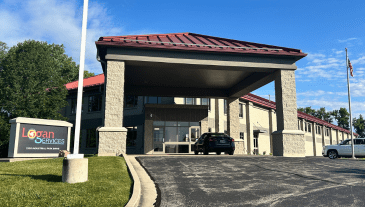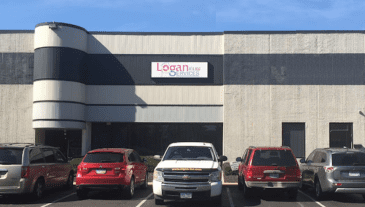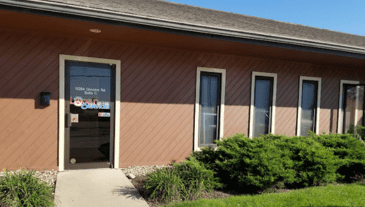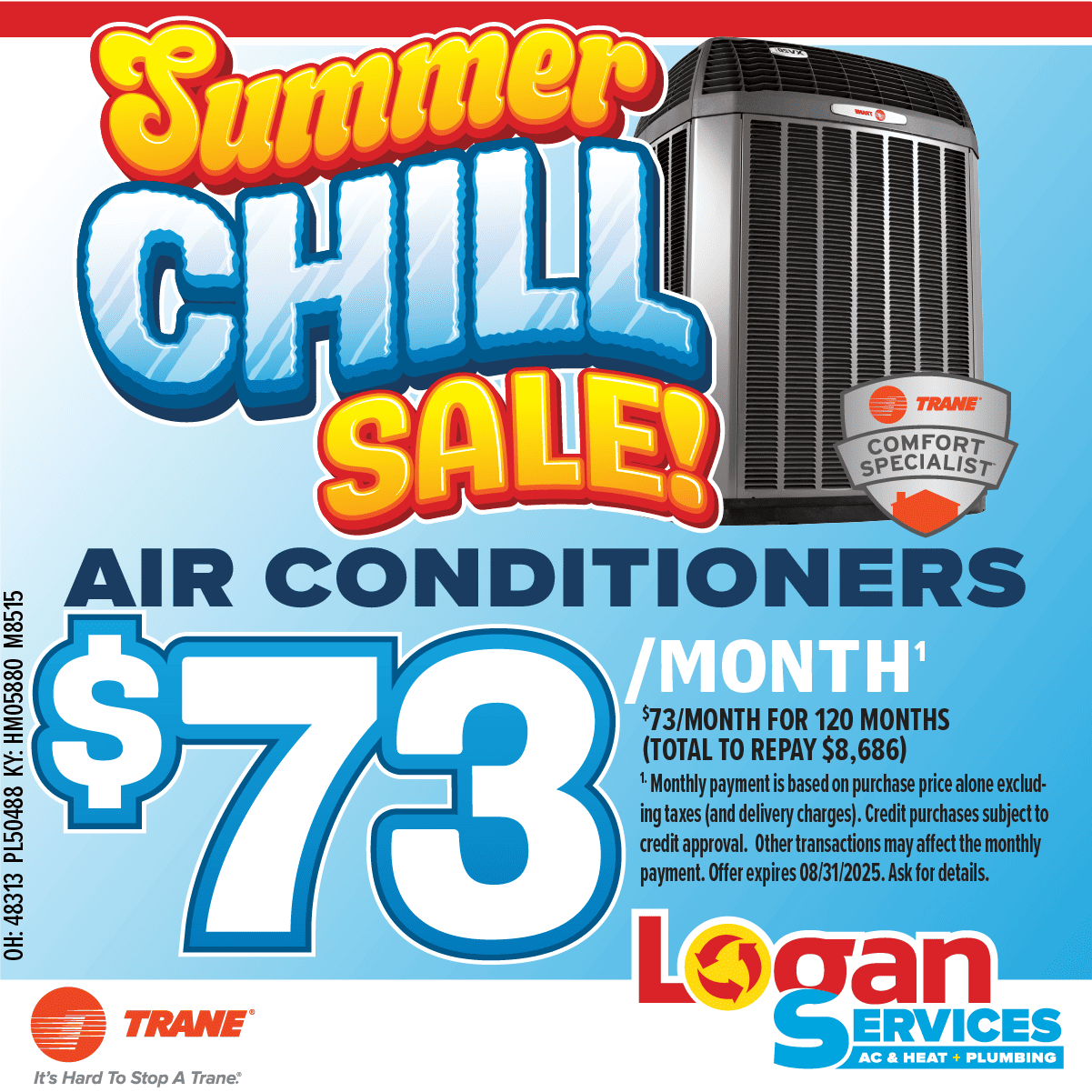Ductless, or mini-split, air conditioners are growing rapidly in popularity in homes across the United States. Unlike traditional central AC systems, which require ductwork throughout a home, ductless systems utilize one or more wall, floor, or ceiling-mounted indoor heads that connect to an outdoor compressor.
Ductless AC systems are praised for their efficiency, zoning flexibility, and clean, discreet visual presence. Homeowners are increasingly installing these systems to supplement existing HVAC setups or replace window ACs. But what is the cost to install a ductless air conditioning unit? In this guide, we’ll break down the expense.
Types of Ductless Air Conditioning Units
There are a few key varieties of ductless AC units to consider when installing a system.
Single-zone ductless systems are an entry-level option that conditions the air in one room or space up to 600-700 square feet. Single-zone works well for providing simple supplemental cooling to a single area. Some popular brands for reliable single-zone ductless ACs are Trane and Mitsubishi.
Multi-zone ductless AC units are a step up from single-zone. Multi-zone systems have two or more indoor air handler units connected to one larger outdoor compressor. This multi-zone setup allows you to control temperatures in separate rooms independently, customizing comfort in different areas. Trane and Mitsubishi are also manufacturers known for making quality multi-zone ductless air conditioners.
Understanding split ACs and the installation costs associated with them is important when deciding between system types.
It’s also important to note that not all mini-split systems provide heating in addition to cooling. However, there are some models, like those from Mitsubishi Electric, that double as heat pumps. The heating and cooling combination helps slash utility bills in one packaged solution.
Finally, some newer “smart” ductless AC systems give you app and voice controls over features like schedules, modes, fan speeds, and more. Other leading brands that make ductless air conditioners with smart home connectivity include LG, Carrier, and Mitsubishi. The smart controls provide more advanced functionality.
Determining if a Ductless System is Right for Your Space
Ductless ACs lend themselves well to certain home layouts and conditions. Assessing the following can confirm if going ductless makes sense:
- Existing ductwork issues: Do you have no ducts, leaky ductwork, or insufficient airflow? Ductless avoids these problems.
- Moisture control: Ductless systems actively dehumidify better than window units. It is helpful for basements or humid climates.
- Zoning needs: If parts of your home get too hot/cold with central AC, ductless zones temperatures.
- Efficiency goals: Properly installed, ductless AC is usually more efficient than central AC or window units.
- Supplemental cooling: Many add a ductless unit in a hot room, porch, or addition to avoid overworking an existing AC.
If ductwork isn’t a driving issue, installing one properly sized, high-efficiency central AC may better suit your needs and budget.
Knowing When It’s Time for a New Unit
Before assuming an expensive new ductless system is required, homeowners should thoroughly inspect their existing cooling equipment for issues that could potentially be remedied through maintenance and repairs.
Oftentimes, symptoms of a failing cooling system, like limited airflow or spikes in energy bills, can be addressed without needing to invest in an entirely new unit. Some common maintenance fixes include replacing dirty air filters, clearing debris and grass/leaves from the outdoor condenser unit, scheduling professional refrigerant level checks, cleaning the outdoor coils, sealing ductwork leaks, and ensuring tight duct connections. Doing these basic troubleshooting steps and tune-ups goes a long way towards restoring normal operation and avoiding premature replacement of systems.
However, if regular maintenance and repairs fail to resolve ongoing cooling performance problems, deeper issues likely exist. At that point, it’s best to have a reputable HVAC technician evaluate your existing ductwork, airflow, refrigerant levels, electrical components, etc., and diagnose any underlying issues.
Only after the root causes are identified should homeowners then consider investing in new cooling equipment. Professional HVAC diagnosis paired with tried-and-true maintenance saves homeowners money and headaches down the road. Prevent ductless system replacement from becoming the default option – make repairs and maintenance the first line of defense when cooling performance declines.
Cost Factors
If choosing to install a new ductless system, several elements factor into total pricing:
- Type of system: Ductless AC unit costs rise for multi-zone over single-zone and heating/cooling combinations versus AC-only. Additional indoor air handlers also increase expenses.
- Brand and efficiency: Top brands like Trane and Mitsubishi with higher SEER ratings generally equate to higher equipment expenses. However, energy savings can offset upfront premiums in the long term.
- Home size and zones: The larger the home and the more zones needed, the more you’ll spend. A two-story house requiring three indoor handler units costs more than a one-zone setup.
- Additional equipment: Specialized wall-mount brackets, in-ceiling cassettes, and other accessories add to the bottom line. Simplicity favors simple wall mounts.
- Ductless Air Conditioning Installation factors: Difficult, time-consuming AC unit installations in hard-to-access spots raise labor fees. Similarly, lengthy refrigerant line sets cost more.
- Permits and taxes: Most jurisdictions require license permits and levy sales tax for HVAC jobs. These can take on several hundred extra dollars depending on your area.
Now that we’ve covered the main elements impacting ductless air conditioner installation costs, what are homeowners paying in 2024?
Average System Costs
Current nationwide pricing averages break down as follows:
- Single-zone systems: $5,000 to $7,000+
- Multi-zone systems: $10,000 to $14,000+
But averages only tell part of the pricing story…
You see a broad range of factors in any one home’s ductless AC cost. Quoted prices can easily swing $1,500 between different HVAC companies.
Estimating installation costs for ductless AC units will require looking at extra equipment, tricky installations, and permitting fees, which also widely influence real-world system pricing.
DIY vs. installed: Ambitious DIYers equipped with HVAC skills and tools can purchase ductless AC equipment directly for massive savings. However, units must be vacuum-pumped and properly commissioned to qualify for warranties. Most homeowners wisely leave installing ductless air conditioners to the HVAC installer pros to ensure the safety and comfort of their home.
What Impacts Costs
Ductless AC installation quotes can fluctuate significantly between contractors for a few key reasons.
One factor is that concealed ceiling cassette heads, which neatly tuck air handling units away out of sight, could cost $800 to $1,500+ more in both equipment and labor per zone versus more simple wall-mounted units. The additional aesthetics and recessed design impact the bottom line and time needed to complete the job.
Another aspect that affects pricing is line set runs. The greater the distance between where the condenser unit is located and the handler unit placements dictates longer refrigerant line set lengths. This greater line set length increases job complexity, refrigerant line requirements, and overall installation pricing. Greater line set distances mean higher quotes.
Lastly, another element influencing final quote amounts is contractor rates. More reputable contractors with positive reviews, extensive expertise, and proven quality workmanship can understandably deserve higher hourly rates and job charges. However, their expertise often results in superior installations compared to less qualified bargain options.
Contrasting multiple installation quotes involves carefully weighing contractor experience against pricing. Skill and complex installations influence rates significantly.
When soliciting ductless AC installation quotes, homeowners must consider costs based on the indoor head type, line set distances impacting refrigerant needs, and the experience level of the contractor team to best set expectations around pricing factors. Accuracy comes from on-site analysis by reputable pros.
Getting Accurate Quotes
While online ductless AC cost calculators offer rough ballpark estimates based on square footage, nothing provides more accurate price quotes than an experienced HVAC contractor performing an onsite evaluation. Quality heating and cooling installation companies will offer to visit your home to take key measurements firsthand prior to providing a detailed quote.
During these in-home assessments, technicians record essential data like:
- The number of rooms requiring dedicated comfort zones. The amount of interior wall-mounted or ceiling-recessed handler units needed directly impacts system size and price.
- Total square footage being temperature controlled. Dimensions of all spaces getting ductless AC to assist proper sizing calculations toward sufficient capacity.
- Areas are compatible with wall mounting units or recessed cassettes based on aesthetics, construction materials, the potential for condensation issues, and feasible line set runs. Cosmetic preferences influence costs.
- Optimal location for exterior condenser placement, allowing adequate airflow and protection without excessive refrigerant line distances. Positioning constraints can limit ideal siting.
Armed with precise room measurements, zone requirements, aesthetics considerations, and potential outdoor condenser locations, the contractor should be able to generate a system recommendation and quote.
Credible quotes provide should include the use and expectation of all of the following:
- The brand, efficiency ratings, output capacity, and features of indoor handler units and outdoor condensers are being quoted. Model details impact price significantly.
- Any mounting hardware, cassettes, electrical whips, drain pans, or accessory items that are required.
- Refrigerant charging, control configuration, and testing
- Permit fees, taxes, or other costs mandated by local building codes or state laws impacting the customer’s bottom line. Avoiding surprise expenses starts here.
- Installation of the system should be included in the total of your quote.
Be wary of quotes drastically higher or lower than competing contractors. Reasonable firms charge fair pricing for reputable equipment and professional-grade work. Bargain bids using inferior equipment or ignoring proper building codes should raise red flags. Ensure apple-to-apple comparisons on bids using the quote criteria above.
Cost Saving Tips
Apply for rebates
Check if EnergyStar-rated ductless AC systems meeting the latest efficiency requirements in your area qualify for utility company rebates or tax credits. There are sometimes attractive incentives of roughly $300+ per zone offered as motivation to buy energy-efficient HVAC gear. Have your chosen contractor assist with all the incentive paperwork and documentation to make the process smooth and simple during installs. This money-back makes the project more affordable.
Time installs in off-season
Since peak summer months are when HVAC activity booms, AC installations can unsurprisingly command premium rates when demand spikes. For the best rates, look to schedule ductless AC projects in the slower, colder months like fall and winter when contractors offer discounts to fill their schedule. Just make sure to get quotes and sign agreements reflecting reduced off-peak pricing to lock in the savings upfront.
Financing Options for a New Ductless AC Unit
Coming up with $5,000, $10,000, or over $14,000 to cover a full ductless air conditioning system and installation proves difficult for many homeowners relying on savings alone. When cash on hand isn’t an option, utilizing financing alternatives to cover costs over time can ease budget constraints.
Credit Card Financing
Some HVAC contractors will accept payment through credit cards, some of which may offer consumers 12, 18, or even 24-month interest-free financing when with qualifying purchases. As long as the balance gets paid as agreed, zero interest gets assessed while allowing bigger purchases to be paid off slowly over time. This kind of promotional financing works best for those with strong overall credit and steady incomes.
Home Equity Financing
In some situations, installing an efficient modern ductless air conditioning system may boost a home’s value versus outdated window shakers enough to justify tapping built-up equity. Options like cash-out refinancing, second mortgages, or home equity lines of credit let owners access their equity, often at competitive interest rates. This injects funds to pay for home improvements upfront. Homeowners can discuss with their mortgage broker or bank if ductless AC loans make sense leverage-wise.
Specialized Energy Efficiency Loans
Government-backed programs like those through Energy.gov, as well as participating utility companies, offer specialized low-interest loans to finance home energy efficiency upgrades specifically. These programs incentivize modern HVAC systems or renewables with very favorable rates, long-term, online applications, and fast approvals. Depending on loan requirements, this money gets injected solely for installing items like new ductless air conditioning to lower future energy consumption.
HVAC Financing Companies
Third-party financing companies focus specifically on lending money for major home system upgrades like HVAC installations. They aim to provide nearly instant lending decisions, predictable fixed interest rates, flexible terms of up to several years, and no home equity or collateral requirements. These lenders may approve loan amounts covering essentially 100% of a ductless AC unit price, too, making projects more affordable once incentives are factored in. Specialized HVAC financing provides an application-easy option.
Review all financing alternatives to make advanced cooling systems reasonably achievable on limited budgets.
The Logan Difference
At Logan Services, we take pride in being more than just another HVAC contractor. As a family-owned and operated business founded in 1969, we bring a personal touch to every job, which our customers appreciate. From the sales process to final testing and beyond, the Logan Difference sets us apart.
It starts with our rigorous in-house training program that all new installation technicians must complete before hitting the field. We care deeply about performing quality work and making sure systems function flawlessly for years after we leave. That’s why our installers only use components we supply from our warehouse to avoid any parts delays or frustrations.
Communication also stands central to our values. We keep customers updated on timeframes, walk through all settings, and address questions. Our managers personally sign off on every site to ensure superior service. They average 15+ years of expertise.
The Logan Difference means taking that extra time to complete a detailed walkthrough, demonstrating system operation and preventative maintenance to avoid future issues. We take ownership of warranties and ongoing performance. Our post-installation checklist safeguards satisfaction.
We also give back to the amazing community that’s supported us for over 50 years through donations, volunteer work, and regular giveaways. Helping friends, neighbors, and local causes matter to us. That personal touch and caring is the Logan Difference.
Frequently Asked Questions (FAQs)
How much does it cost to install a ductless mini split?
For a single interior unit, expect to spend $4,000 to $7,000+ on average. Multi-zone systems with two or more air handlers commonly fall between $8,000 and $14,000+ depending on home size, job difficulty, and specific size and technology capabilities of the equipment. Costs ultimately hinge on brand, efficiency, accessories, number of zones, and more.
Is installing a mini split hard?
HVAC professionals handle complex refrigerant charging, vacuuming lines, drilling penetrations, running electrical equipment, configuring controls, and testing. Lacking proper training and equipment, DIY ductless installs easily go wrong, impacting performance and warranties. Mini-split installation is best left to seasoned contractors.
Do I need a professional to install a ductless air conditioner?
You absolutely need an experienced HVAC technician for proper ductless AC commissioning. Only pros have licenses to legally handle refrigerants, integrate components and pressure test systems, configure control boards and charge units, and ensure optimal operation meets codes as well as manufacturer specs to maintain warranties.
How long does it take to install ductless AC?
The installation process typically spans one to three full workdays, depending on system size and contractor experience. Steps include mounting equipment, cutting openings, drilling paths for refrigerant and condensation lines, pulling electrical wires, pressure testing, vacuuming air, charging refrigerant, configuring controls, and testing functionality. Larger multi-zone projects take longer.
Does ductless AC add home value?
Modernizing and upgrading a home’s HVAC system to efficient ductless technology represents an added value versus outdated window rattlers or dysfunctional forced-air systems. Appraisers factor updated amenities and utility cost-saving potential into assessments. However, the amount of value lift depends on the market.




















